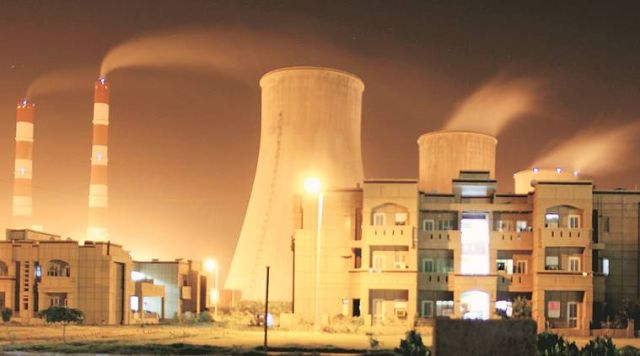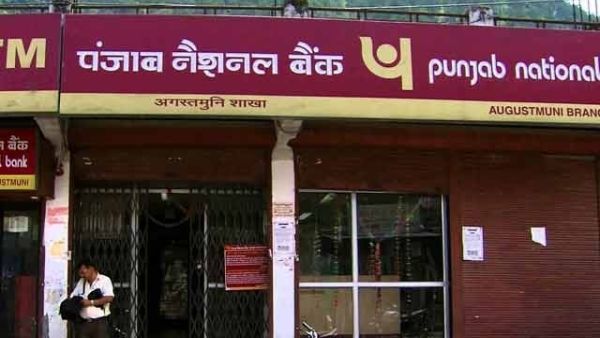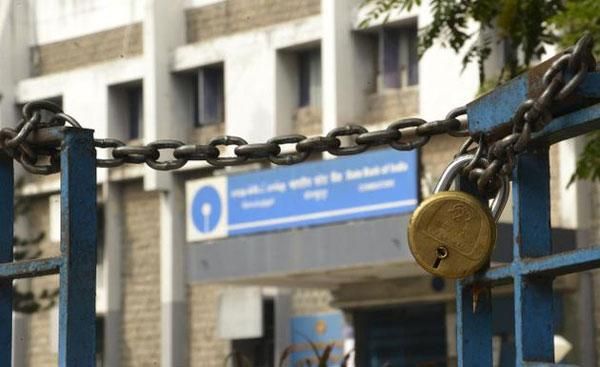
by admin | May 25, 2021 | Opinions
 By EAS Sarma,
By EAS Sarma,
The government’s announcement to soon tender out 100 GW of solar power in one go is somewhat an ambitious step towards transition to clean energy, compared to the previous largest tender of 10 GW — which is likely to be opened in July.
The new tender has provisions for boosting domestic module manufacturing and energy storage capacities as well — absolutely essential in light of renewables now likely to outpace coal in new power capacity. India has thus expressed its resolve to shift its energy development trajectory from fossil-based resources to renewables.
This latest announcement lends further credence to the Power Minister’s claim that India will overshoot its 2022 target of 175 GW of installed renewables. Whether the target is overshot or net additions fall just short, the government’s periodic impetus for renewables in India shows that it is indeed committed to honoring the 2015 Paris Agreement.
However, it is a matter of serious concern that the imprudent decisions during the last decade or so to take up an unduly large number of coal-based power projects over and above the demand projections made by erstwhile Planning Commission and the huge time and cost overruns in implementing those projects have not only brought many PSU financial institutions under stress but also potentially neutralised the benefits expected from renewables.
PSU banks have been forced to divert their credit for refinancing the delayed coal-based projects rather than providing credit for projects based on renewables. In 2017 nearly 17 GW of coal-fired thermal power was re-financed and/or extended new financing by the public sector at a cost of Rs 60,767 crore ($9.35 billion).
Latest figures suggest that 40,130 MW (20.3 per cent) of India’s 199 GW of thermal power capacity has been classified as stressed assets; 2,520 MW of this is currently facing liquidation, while 10,430 MW may soon be headed that way as no power purchase agreements (PPAs) are in place.
Even existing coal-based power projects are operating at low Plant Load Factors (PLFs), imposing heavy costs on state power utilities. One reason for this is that the off-peak demand for electricity is not sufficient to allow the excess coal-based generation to operate at full capacity.
There are other reasons for this situation. Coal-based power generation is becoming non-competitive in the face of sub-INR 3/kwh tariffs discovered for utility scale solar and wind power. The massive new tender for new solar capacity will further aggravate this problem for coal-based plants. In some cases, the absence of reliable fuel supply contracts and bottlenecks in coal transportation have also resulted in coal-based plants running at low PLFs. It is unlikely that these constraints will get resolved soon.
The trend is, therefore, painfully obvious: Coal-fired power is increasingly becoming uncompetitive against renewables, and its future prices — after factoring in increasingly costlier coal imports and compliance with tightening emission norms — are only likely to inch upwards. Politico-economic considerations being what they are, higher costs of coal-based power lead to larger subsidies for electricity end-users, which imposes a heavy burden on the public exchequer.
Adding to the quagmire is the fact that coal-fired power plants have led to large-scale displacement of rural families, disrupting their livelihoods. Burning of coal, in the absence of effective regulatory oversight, has adversely affected the health of the local communities, leading to larger expenditure on public health schemes.
In the normal course, financial institutions would hve exercised prudence and refrained from extending credit to coal-based power projects in view of their declining viability and the uncertainty in the recovery of loans. It is therefore somewhat inexplicable that they should continue to invest heavily in coal-based power capacity, especially at a time when they are saddled with huge NPAs, especially power sector NPAs.
While private sector banks have a marginal role in this, it is the PSU banks that face this problem. If they continue to extend credit to unviable projects, would it not necessitate recapitalisation of the PSU banks from out of the tax-payers’ money and jeopardising the interests of the public shareholders?
Globally the trend is quite the opposite. Prominent insurers such Lloyd’s (UK), Allianz (Germany), AXA (France) and Dai-Ichi (Japan) have already announced their termination of insurance for coal-fired power and coal mining. Divestment from coal is also being pursued by ING (major Dutch financial institution), the Norwegian government’s $1trillion pension fund, the Asian Infrastructure Investment Bank (AIIB) and to an extent, the World Bank.
Even at the recently concluded G7 summit, institutional investors (including wealthy private firms) together worth nearly $26 trillion in global assets urged the leaders to phase out coal-fired power generation. Surely they would not have done so if they saw no trouble in remaining invested in coal. Of course for them returns on investment may be a more pressing concern than tackling global warming, but the two goals are not mutually exclusive.
What then, is driving India’s public sector financing for coal-fired power? And to what end? Are we so infatuated with relentless economic growth that we completely ignore coal-fired power’s debilitating impacts on our financial institutions, our citizens’ health and the world’s precariously low carbon emission allowances? Apparently, there are other than prudent considerations which are compelling the government to persuade PSU banks to finance coal-based power.
(EAS Sarma is a former Secretary, Ministry of Power and Ministry of Finance and also served as an energy advisor to the Planning Commission. The views expressed are personal. He can be reached at eassarma@gmail.com)
—IANS

by admin | May 25, 2021 | Banking, Corporate, Corporate Governance, News

Piyush Goyal
Mumbai : Public sector banks (PSBs) will soon create a dedicated mechanism for managing stressed accounts, Finance Minister Piyush Goyal said on Friday following a meeting with PSB chiefs on the issue of banks’ non-performing assets (NPAs), or bad loans.
The accumulated NPAs in the Indian banking system have crossed the staggering level of Rs 9 lakh crore. The proposed mechanism would seek a faster resolution of such cases.
“A panel under Punjab National Bank (PNB) non-executive chairman Sunil Mehta will give its report in two weeks over setting up of Asset Restructuring Company (ARC) or Asset Management Company (AMC) to resolve stressed assets,” Goyal told reporters here after the meeting.
“I have discussed improving credit flow to strengthen Indian economy while mitigating risk flow associated with that,” he said.
“The committee will deliberate whether it is worth considering setting up of an AMC to deal with assets having exposure to several banks. It will also consider if setting up of an ARC or AMC is good for the banking system.”
Noting that the State Bank of India has a “proven mechanism” to take faster decisions in a transparent manner, Goyal, who holds temporary charge of the finance portfolio in the absence of a convalescing Arun Jaitley, said all bank showed willingness to set up such a mechanism for faster resolution of stressed accounts.
“Some of the banks may also consider setting up oversight committees and bring in external expertise to help faster decision making,” he said.
Goyal said discussions during the meeting focused on credit flow and banks devising mechanisms to ensure credit flow to good borrowers should not be hampered owing to restrictions on credit activity due to NPAs.
“Risks need to be mitigated to support the economy,” he said.
The Minister said the meeting had discussed situation arising out of banks working in “silos” and PSBs “decided to come together in a cohesive manner to resolve the credit needs of MSMEs (micro, small, medium enterprises), exporters, small and medium borrowers so that the needs of the economy can be addressed.”
He also said that all vacant positions of PSB heads will be filled in the next 30 days.
—IANS

by admin | May 25, 2021 | Banking, News, Opinions
 By Taponeel Mukherjee,
By Taponeel Mukherjee,
Recent statements by the chief of the Banks Board Bureau (BBB) that public-sector banks (PSBs) have a role in creating Indian infrastructure considering the support they have provided the sector over the last decade, merit discussion.
PSBs did assist in creating much-needed infrastructure, but the question remains at what cost and whether there are better avenues to fund the infrastructure in the future. The non-performing assets (NPAs) that the PSBs hold from the infrastructure sector clearly point towards the need for alternative financing mechanisms.
To put things in perspective, according to the Economic Survey 2017-18, the road sector alone has NPAs of Rs 36,596 crore. Given the shorter duration of liabilities of the PSBs, not all of them are structured to finance infrastructure. The need is to reduce their exposure to the infrastructure sector.
Firstly, the government needs to push for more Engineering, Procurement and Construction (EPC)-type projects as in the highway construction space, with the eventual aim of auctioning off the assets once operational. Given the issues around delayed permits, land acquisition and the lack of available construction financing, the government in an Indian context maybe better suited at infrastructure creation than the private sector in certain sectors.
The National Highways Authority of India (NHAI) has seen a significant push in highway construction based on the above assumptions. Auctioning operational assets to private investors creates value for the entire ecosystem.
The government needs to look at the Infrastructure Investment Trust (InvIT) vehicle and the fundamental reasons as to why the vehicle hasn’t been popular in India. For starters, the first two listings haven’t done well and this has discouraged other investors from using InvITs. Unless private infrastructure businesses in India start recycling assets using InvITs, it is hard to see how Indian infrastructure creation gathers momentum.
While the government is financing the creation of the new infrastructure to some extent, it is equally important for infrastructure businesses to create more efficient balance sheets using asset recycling and not through debt or equity issuance. At a fundamental level, infrastructure businesses need to reassess if their core competency is creating infrastructure assets and managing these assets or whether infrastructure businesses have a relatively low cost of funding their balance sheets?
The issues around NPAs and the relatively high cost of funding infrastructure businesses face clearly point towards the former. They need to innovate through specialising in asset development and management, while using private investors to generate capital through auctioning operational assets. A larger investor base in infrastructure will also ensure that asset prices, especially at the time of bidding, reflect economic value, therefore avoiding aggressive overbidding. Aggressive bidding of assets by private developers is one of the major causes of NPAs.
As PSBs slowly reduce their exposure to the infrastructure sector, businesses will do well to consolidate through mergers and acquisitions. This is a trend that is picking up with the likes of ReNew buying Ostro in the renewable energy space. What is worth noting is the significant capital that foreign private investors have deployed through ReNew in this deal.
Such deals across the infrastructure sector would help strengthen balance sheets, create economies of scale and allow investors to both enter and exit investments. As infrastructure looks at new avenues of financing and as PSBs reduce their exposure to the sector, consolidation is a trend that we should see more of.
The PSBs cannot be completely removed from the financing spectrum of Indian infrastructure, because of the large amount of financing — pegged at $4.5 trillion by the Economic Survey — required. However, the PSBs will need a fundamental change to be able to finance infrastructure better. They will have to consolidate significantly.
It makes little sense for infrastructure projects to raise financing from a consortium of PSBs when all these PSBs are essentially backed by the government, albeit with different proportion of shareholdings. Having fewer PSBs will mean that a centralised lending window operates, therefore focusing more on project quality and corporate governance.
In summary, PSBs should reduce their exposure to the infrastructure sector — if not completely avoid the sector. The process of change will be gradual and the stability of the sector needs to be kept in mind. Both the government and private companies need to embrace their role as creators of new infrastructure. Institutions such as NHAI in the government and companies such as Global Logistic Properties (GLP) from China provide a good template for organisations to create operational assets and then recycle them to fund new assets.
In addition, consolidation is required within both infrastructure businesses and PSBs to create more efficient balance sheets and improved lending standards. One must acknowledge the role played by PSBs in the creation of infrastructure, but it is equally important to realise that the old way of working isn’t ideal for the future.
(Taponeel Mukherjee heads Development Tracks, an infrastructure advisory firm. Views expressed are personal. He can be contacted at taponeel.mukherjee@development-tracks.com or @Taponeel on Twitter)
—IANS

by admin | May 25, 2021 | Banking, Corporate, Corporate Buzz, News, Politics
 New Delhi : In light of the massive Rs 11,300 crore ($1.8 billion) scam allegedly involving jeweller Nirav Modi that has hit state-run Punjab National Bank (PNB), industry chamber Assocham said on Sunday that the government should surrender its majority control of banks, which should be allowed to function like private sector lenders.
New Delhi : In light of the massive Rs 11,300 crore ($1.8 billion) scam allegedly involving jeweller Nirav Modi that has hit state-run Punjab National Bank (PNB), industry chamber Assocham said on Sunday that the government should surrender its majority control of banks, which should be allowed to function like private sector lenders.
In a regulatory filing earlier this week, PNB said it had detected the gigantic fraud in one of its Mumbai branches, putting the quantum of fraudulent transactions at $1,771.69 million. The amount is equivalent to eight times the bank’s net income of about Rs 1,320 crore ($206 million).
“The PNB’s fraudulent transactions worth Rs 11,300 crore should act as a strong trigger for the government for reducing its stake to less than 50 per cent in the banks which should then be allowed to work on the lines of private sector lenders with a full sense of accountability to their shareholders protecting interest of depositors,” Assocham said in a statement here.
“The public sector banks (PSBs), ironically, are slipping from one crisis to the other and there is a limit the government can keep bailing them out at the cost of taxpayers’ money, even if it is the principal shareholder in these lenders,” it said.
The industry body said PSB senior managements spend bulk of their time “receiving and implementing directions from the bureaucrats even for innocuous issues.”
“In the process, the core banking functions, including all important risk mitigation and management, take a back seat.”
“The problem has become more grave with banks adopting new technologies which can prove both boon and bane,” it added.
In this connection, a Special CBI Court in Mumbai on Saturday remanded to police custody till March 3 three accused persons in the case.
The three includes a retired PNB Deputy Manager Gokulnath Shetty, Single Window Operator Manoj Kharat and an authorised signatory of the prime accused Nirav Modi’s group companies.
Besides these, the Central Bureau of Investigation (CBI) has named 10 other directors and officials as accused in the scam.
“Once the government equity in the banks is reduced below 50 per cent, there would be much more autonomy along with accountability and responsibility of the senior management,” Assocham said.
“The boards should then be truly taking the policy decisions while the CEOs would run the banks with full authority, coupled with the commensurate responsibility, instead of looking towards the bureaucrats for directions,” it added.
Assocham Secretary General D.S. Rawat in a statement urged the Reserve Bank of India (RBI) to take the lead to “engage with the industry in finding ways to do clean business in the entire financial sector, be it the public sector or private sector banks or even the non-banking finance companies.”
In this regard, Chief Economic Advisor (CEA) Arvind Subramaniam has also advocated more private participation in public sector banks.
Speaking at an event in Chennai on Saturday, Subramaniam said while the government was going for recapitalisation of public sector banks, the scrutiny, monitoring and disciplined deployment must be ensured only through greater private participation in banks.
According to him, there should be less public lending to private sector and the mode to achieve that is to have higher private participation in the banking sector.
He said more privatisation could be the way forward since there was no guarantee that better governance recommendations of banks, instead of privatisation, would be implemented effectively.
—IANS

by admin | May 25, 2021 | Banking, Corporate, Corporate finance, Corporate Governance, Economy, Finance, Markets, News, Politics
 New Delhi : The central government’s recent decision to recapitalise public sector banks (PSBs) has led to a surge in credit growth, the government said on Saturday.
New Delhi : The central government’s recent decision to recapitalise public sector banks (PSBs) has led to a surge in credit growth, the government said on Saturday.
Finance Minister Arun Jaitley said that credit growth would go further up once the infusion of capital takes place into the baking system.
According to Financial Services Secretary Rajeev Kumar, the banking sector posted double digit growth on a year-on-year basis in December 2017.
“Surge in credit growth: Sustained momentum post-PSB recap decision — Banking sector posts double digit (10.7 per cent Y-o-Y) growth in Dec’17, up from (7.2 per cent Y-o-Y) in Oct’17, powered by services and retail,” Kumar tweeted.
Later in the day, Jaitley said the lending that the banks do is an indication of how growth will move.
“The latest data has shown that credit growth has moved up. And once the infusion of capital takes place into the banking system, credit growth will further go up,” he said during 75th anniversary celebrations of the UCO Bank.
—IANS





